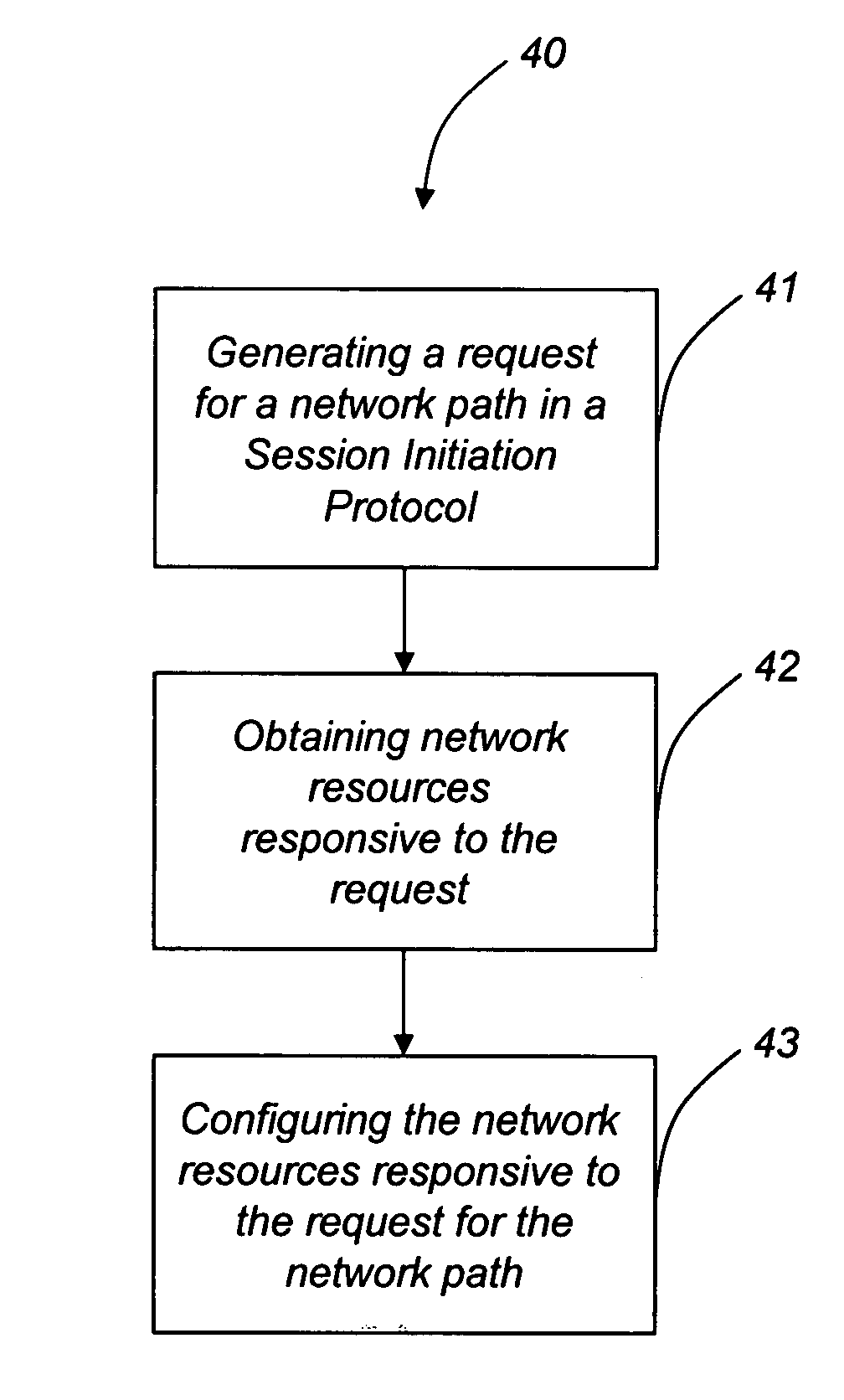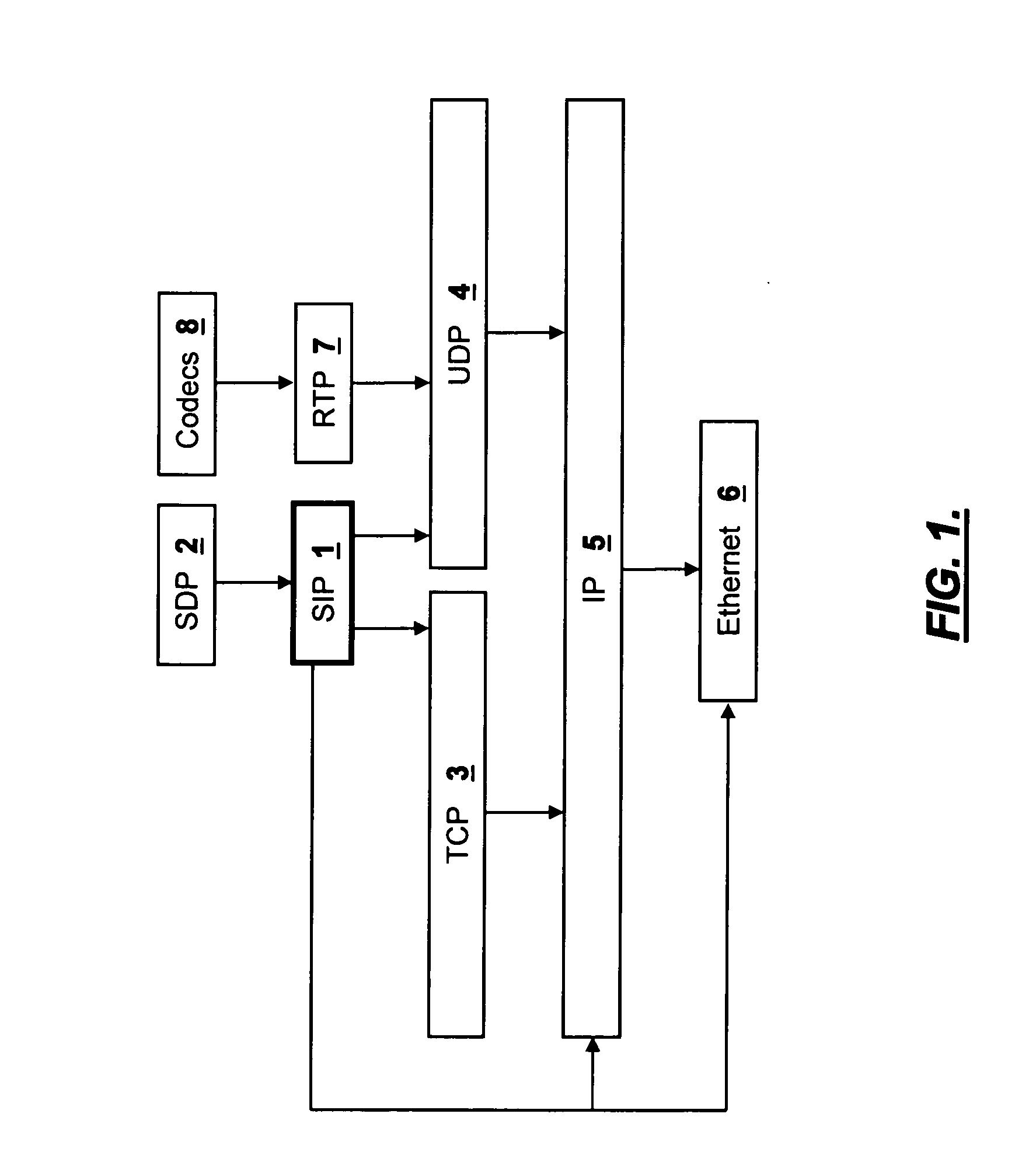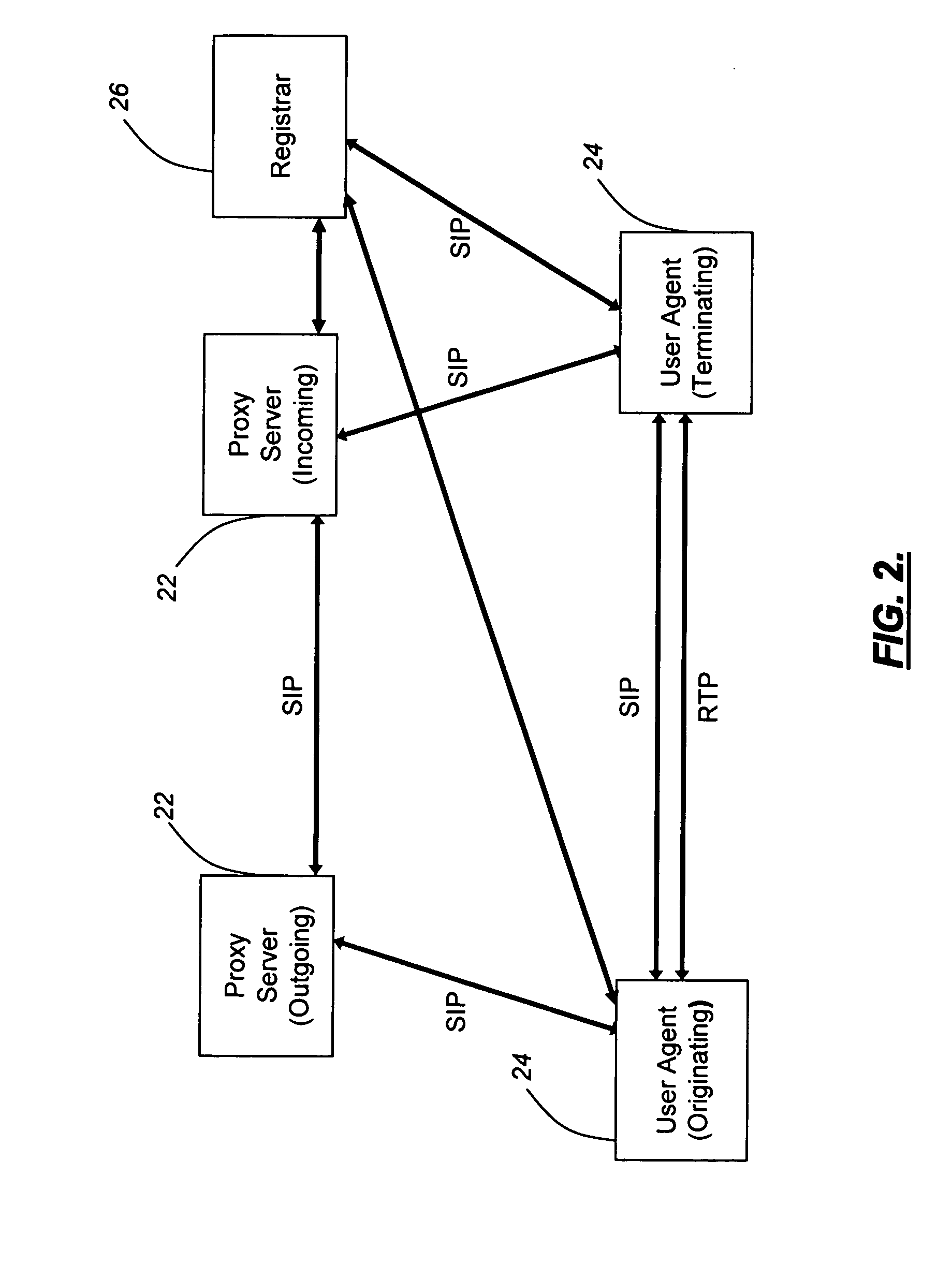Methods and systems for session initiation protocol control of network equipment
a network equipment and protocol control technology, applied in the field of network control methods and systems, can solve the problems of affecting the service-desired topology creation process, the disadvantage of uclp in similar ways, and the difficulty of correctly interacting with the details of the physical equipment and facilities to create service-desired topologies, etc., to achieve the effect of eliminating dependencies and eliminating dependencies
- Summary
- Abstract
- Description
- Claims
- Application Information
AI Technical Summary
Benefits of technology
Problems solved by technology
Method used
Image
Examples
Embodiment Construction
[0022]Typically, paths in a network are set up via direct provisioning performed by an EMS / NMS / OSS, i.e. a platform supporting multiple WDM spans in order to provide NM services. The EMS / NMS / OSS is a system responsible for managing at least part of the network, and communicating with agents in order to help keep track of network resources, statistics, and performance. Alternatively, paths in the network are set up via automated nodal software such as RSVP-TE that is capable of performing routing under EMS / NMS / OSS command. A relatively recent protocol, SIP, has evolved for use in conjunction with multimedia devices in order to locate and connect devices together. For example, a VoIP voice call between IP telephones or computers uses SIP to locate and connect the parties calling / called. The present invention alters the fundamental assumption that SIP is used to trigger network connections between devices, and offers a new idea that SIP can be used to tie together network equipment in ...
PUM
 Login to View More
Login to View More Abstract
Description
Claims
Application Information
 Login to View More
Login to View More - R&D
- Intellectual Property
- Life Sciences
- Materials
- Tech Scout
- Unparalleled Data Quality
- Higher Quality Content
- 60% Fewer Hallucinations
Browse by: Latest US Patents, China's latest patents, Technical Efficacy Thesaurus, Application Domain, Technology Topic, Popular Technical Reports.
© 2025 PatSnap. All rights reserved.Legal|Privacy policy|Modern Slavery Act Transparency Statement|Sitemap|About US| Contact US: help@patsnap.com



